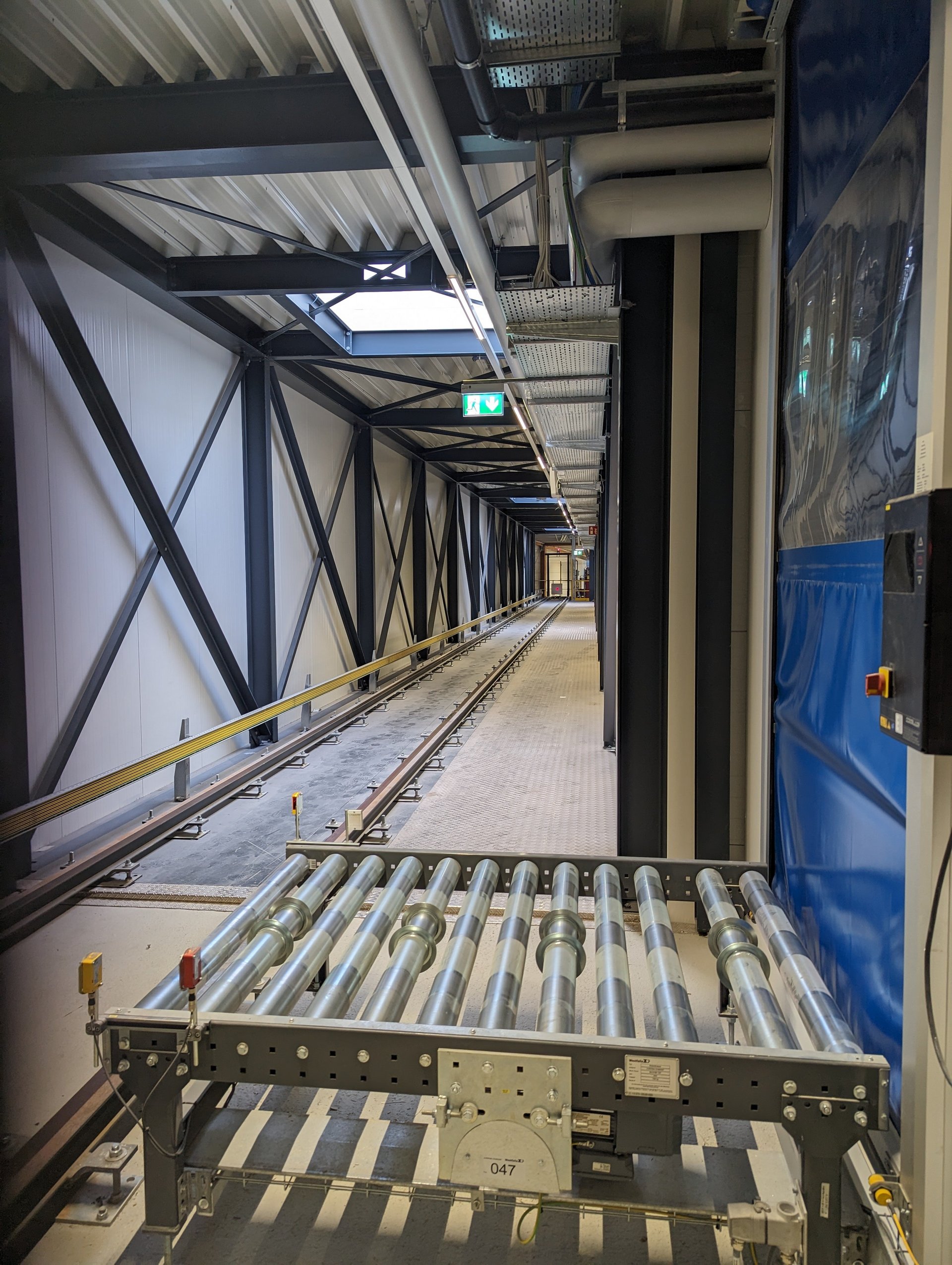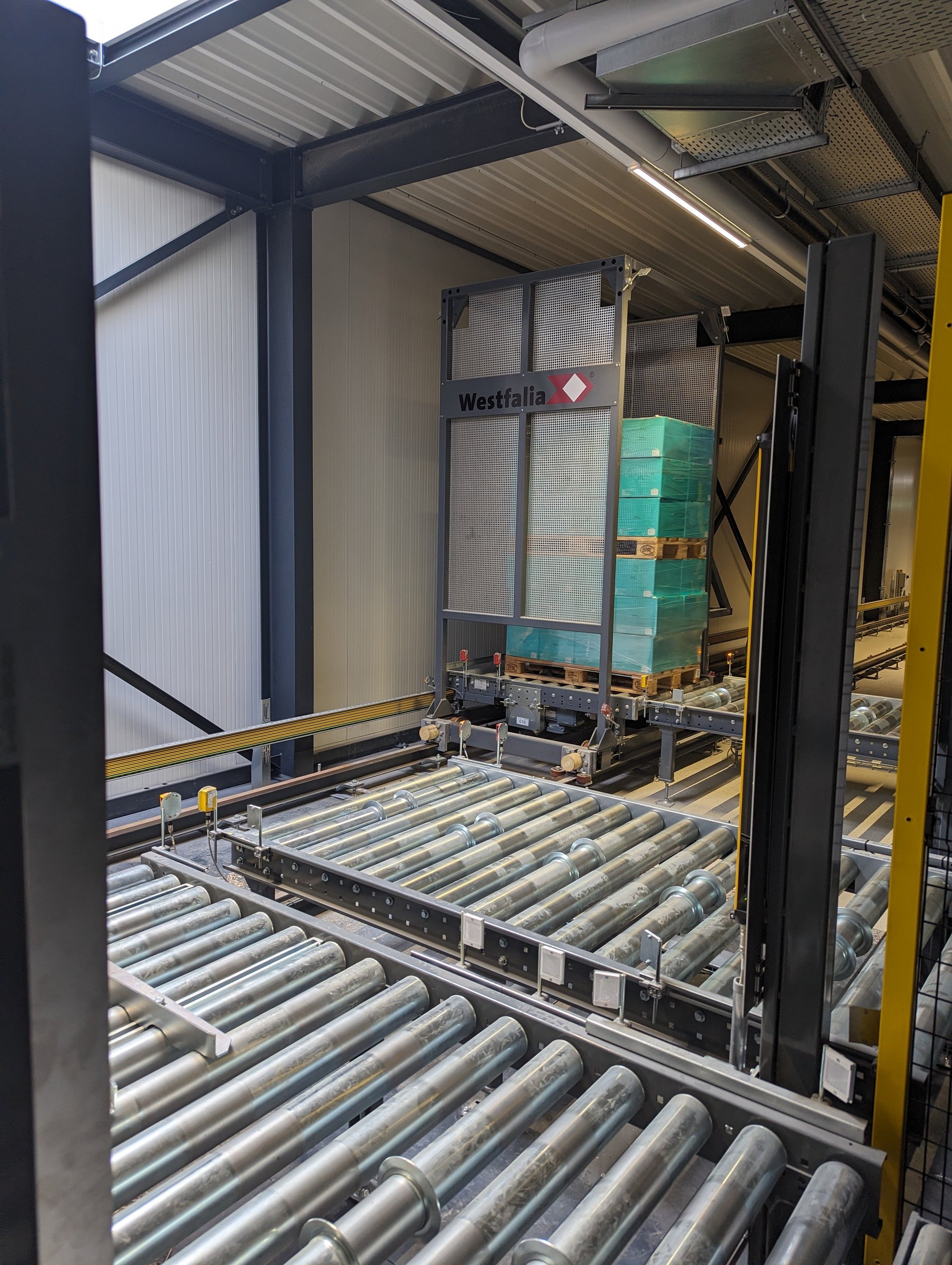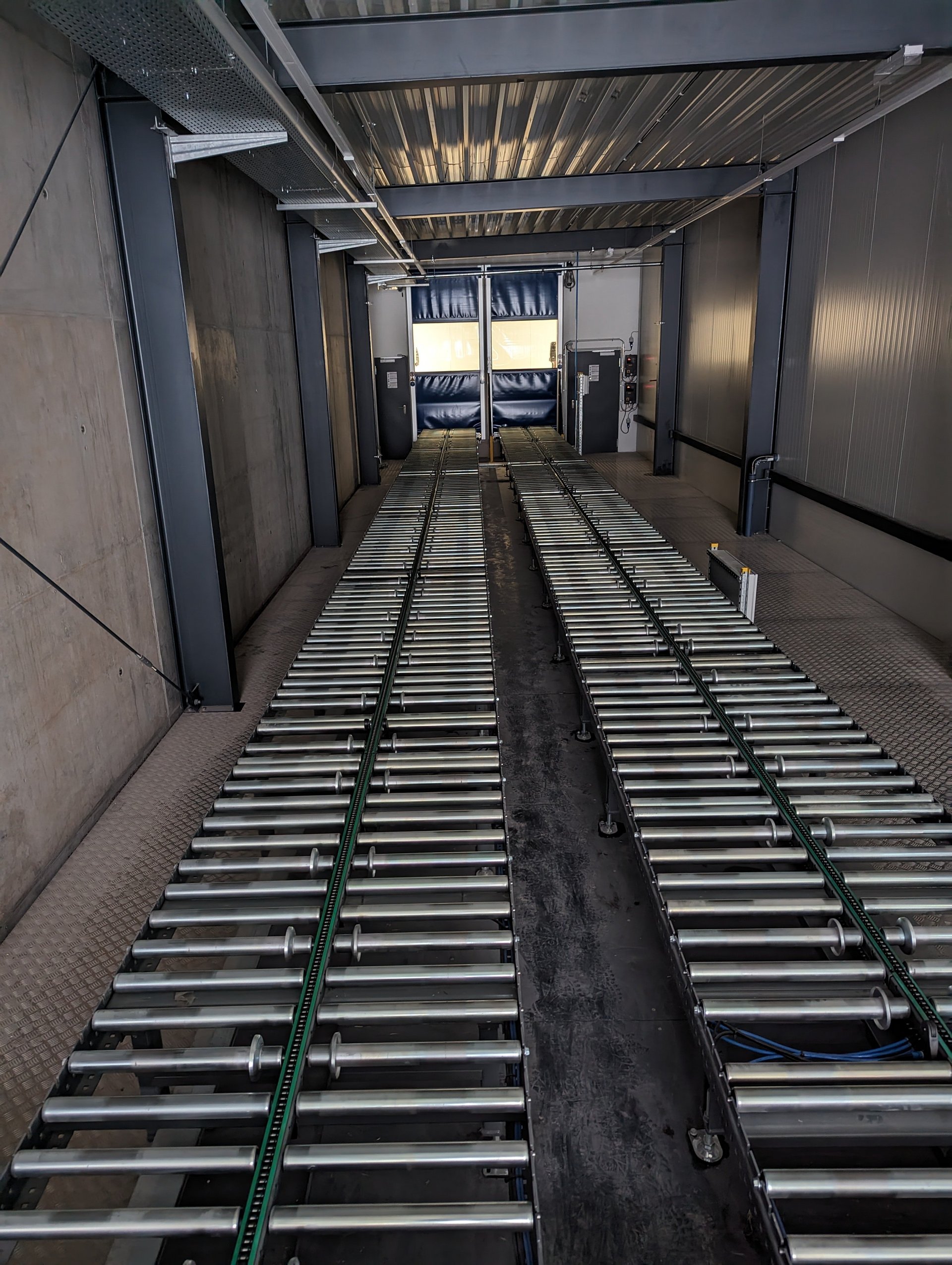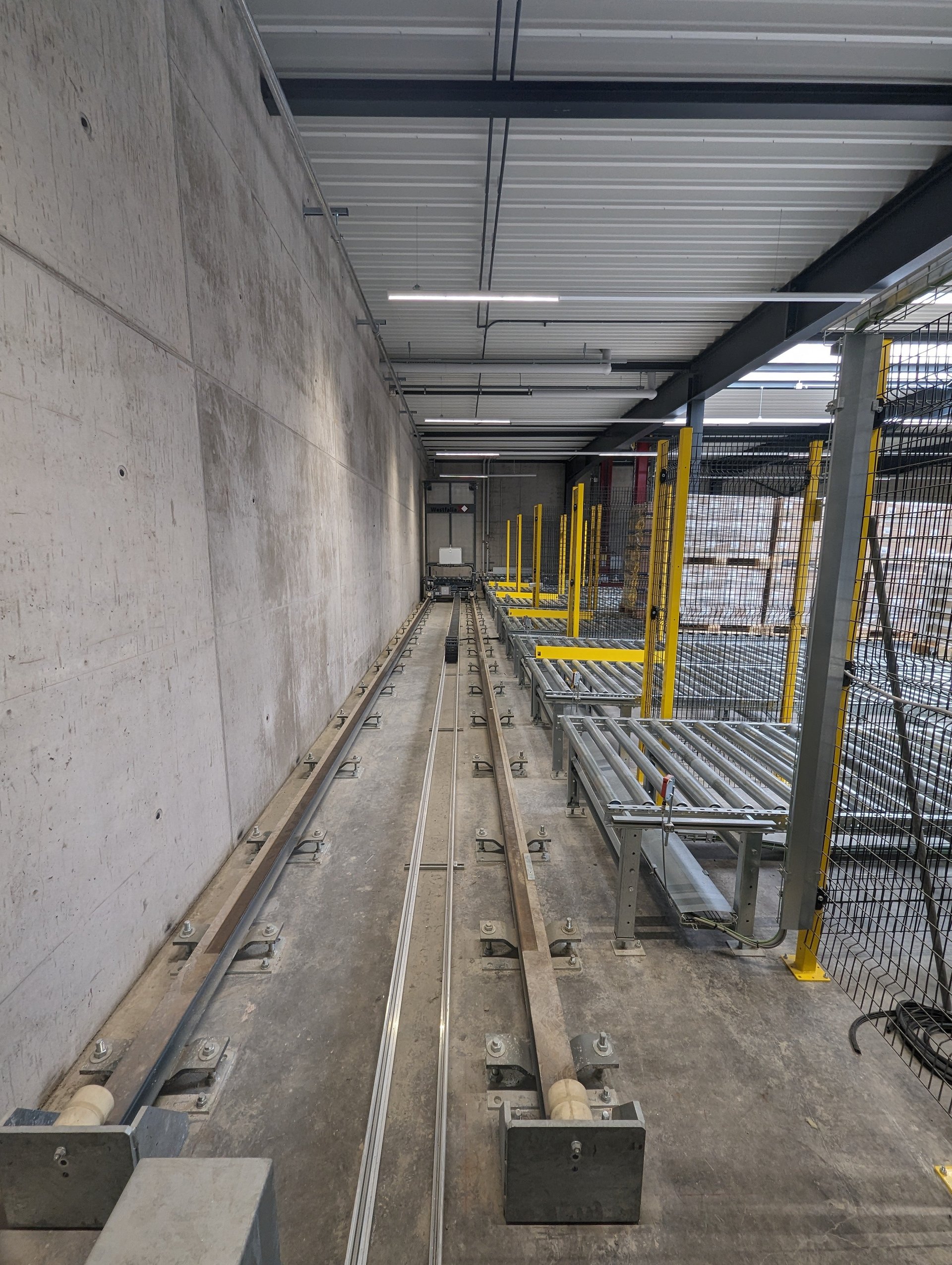Spaichingen/ Borgholzhausen, 6. September 2023 - Who invented the noodle is controversial: The ancient Greeks and Romans already knew noodle dishes, archaeologists found a 4,000-year-old pot with millet noodles in China. Arabs and Indians also ate noodles early on. The noodle may have been invented independently by different peoples. What is clear, however, is that there are (so far) about 600 varieties of pasta worldwide. And that industrial pasta production in Baden-Württemberg, Germany, has its origins in Spaichingen.
Today's Spaichinger Nudelmacher GmbH has been producing the popular pasta since 1853: 70 tons per day, 22,000 tons per year in more than 300 different shapes from a wide variety of raw materials. Whether spaghetti or Swabian Spätzle: the success of the noodle continues unabated. This is why in 2022, intralogistics specialist Westfalia Technologies replaced the previous storage area of around 4,000 m² served by forklifts with an automated storage system for 9,030 pallets on a floor space of just 1,800 m². Previously, up to 4,500 pallets were stored in block warehouses, which the Spaichingen team served with forklifts. Only raw materials and special packaging materials that do not fit into the high-bay warehouse are still stored in the existing property. In the future, the current storage area which already existed before the automated storage system was installed, will be completely converted into a production hall.
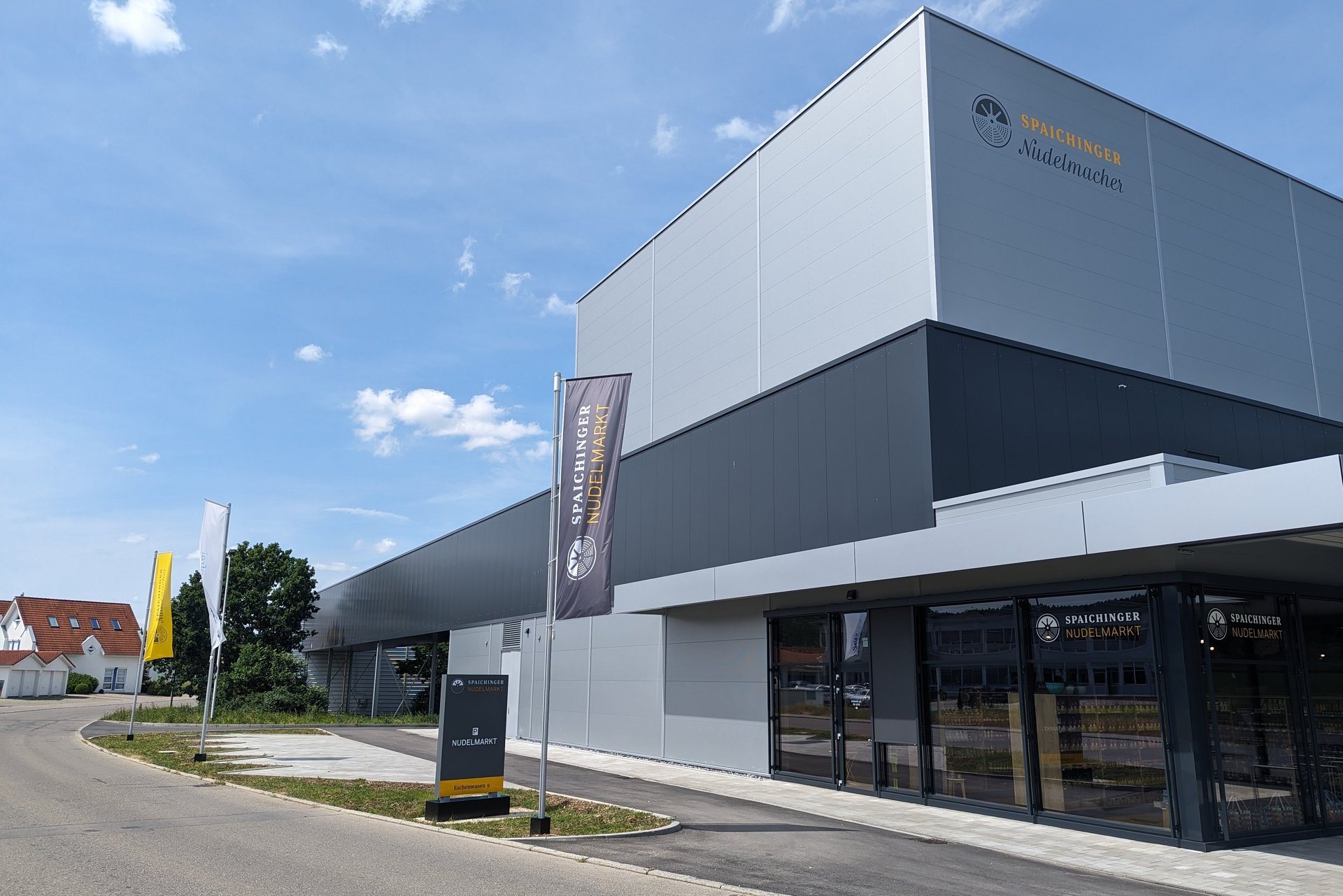
Warehouse automation strengthens factory sales and shipping
In addition to its own pasta range for end consumers and as a B2B specialist for business partners who are looking for and want to implement innovative pasta ideas, the Spaichingen-based pasta makers – Spaichinger Nudelmacher in German – are actively researching new pasta varieties. Part of the ALB-GOLD Group since 2012, which is one of Germany's largest pasta manufacturers, the Swabian company with 110 employees is the only industrial manufacturer of gluten-free pasta in Germany and a specialist in the development of pasta made from alternative raw materials.
With their success, the Swabians are also expanding capacity elsewhere: The new storage system from Westfalia, the inventor of multi-deep automated storage, which went into operation in the spring of 2023, is connected to both the factory outlet and the shipping zone. Both were also expanded as part of the new construction. The fully automated, resource-saving Satellite® warehouse in self-supporting silo design is oxygen-reduced for fire protection. It reduces oxygen exchange through airtight airlocks and maintains energy levels. And it follows the sustainable modernization of the company: Spaichinger Nudelmacher GmbH commissioned its new, state-of-the-art production facilities with heat recovery back in 2011. This makes the plant one of the most modern pasta factories in Europe – now also on the storage side.
Sustainable capacity in a minimal footprint
As general contractor, the intralogistics specialist Westfalia advised on the future warehouse layout and designed it at the beginning of 2021. And implemented it from March 2022 using its own key technologies and from its own production. "As a general contractor and manufacturer, we are supplying the high-bay warehouse, storage and retrieval machines and conveyor technology, including the control systems and our Savanna.NET® Warehouse Execution System. The scope of supply also included high-bay steel construction and the gravity roller conveyors," says Frank Ratert, the responsible project manager at Westfalia. The normal temperature of the warehouse is 5 to 20 °C.
The compact multi-deep storage in the automated high-bay warehouse allows maximum capacity in a minimum amount of space and an energy-saving throughput of approx. 80 load units per hour in two- to three-shift operation. The storage system was built on an existing site adjacent to the company’s headquarters.
Bounded by an elongated curve, the site resembles a piece of cake. The new, two-aisle compact warehouse is 73 meters long, 25 meters wide and 27 meters high. The Westfalia project team fitted it perfectly into the available space: "The warehouse was set 4.60 meters deep into the ground for this purpose and can be extended longitudinally at a later date if necessary", says project manager Ratert.
Few storage and retrieval machines for maximum efficiency
The new automated high-bay warehouse has just 2 aisles, each for a 25-meter high automated storage and retrieval machine (SRM), equipped with the LiftSatellite® load handling device and chain conveyor. For the operator, this means less maintenance and energy consumption due to fewer SRMs.
The software that optimally controls the conveyor and storage technology also contributes to this. With the Savanna.NET® Warehouse Execution System (WES), Westfalia integrates its own solution that combines all warehouse management (WMS) and material flow control (warehouse control system, WCS) functions. In a single instance, on an intuitive user interface. This also eliminates additional maintenance effort due to fewer interfaces compared to individual software solutions for warehouse management and warehouse control. The modular system is scalable to any level of complexity and creates complete data transparency for optimal warehouse management. In this case, it is connected to the ERP system GUS.
Storage technology that is gentle on materials and pallets
Satellite® technology enables particularly deep storage channels and high storage density. The load handling device detaches from the storage and retrieval machine, moves under the load units in the storage channels, and stores and retrieves them there. The pallets are placed on three parallel storage profiles to provide optimum support for the load units.
As a result, the load units do not bend, are subjected to less stress, are stored accurately, and last significantly longer. Combined with multiple contour checks, this ensures a stable system with no downtimes caused, for example, by jammed pallets. And it creates greater independence from rising pallet prices.
For flexible loading aids and heavy loads
The Lift Satellites are designed for particularly heavy loads. The SRMs can handle 49 pallets per hour in single play and 55 pallets per hour in double play (combined storage and retrieval). Goods are stored on 10 levels on Euro pallets, industrial pallets, plastic pallets, one-way pallets with a minimum skid width of 100 mm, special formats, and big bags. The load units usually weigh between 250 and 350 kg. However, the racks and system are also designed to handle heavy load units from 900 to 1,250 kg. High-bay rack level 5 is reserved for these heaviest units – such as spaghetti, which is packed particularly tightly in boxes to save space.
"A special requirement was to connect the existing production and the new high-bay warehouse with a newly constructed conveyor bridge on site," says Frank Ratert. "We solved this with a transfer car from our own production. It transports load units at a travel speed of up to 200 meters per minute over a distance of 80 meters between production, warehouse and shipping or factory sales. The conveyor bridge spans the truck bypass of the high-bay warehouse between the factory and the warehouse."
On the production side, load units are loaded or unloaded for production supply - still manually, in the future by automated guided vehicles (AGVs). A vertical conveyor with roller conveyor transports the load units between the floor and the platform to the conveyor bridge, where they are transferred or picked up by the transfer car (T-Car).
Transfer car on conveyor bridge as the "nerve cord" of the system
With a capacity of about 80 load units per hour, the T-Car has many tasks to perform. Ratert: "It transports load units from the shipping zone and the laboratories into the system, brings fresh goods and pallets to shipping, takes over the acceptance and supply of the high-bay warehouse, and supplies production with raw materials."
At the level of the conveyor bridge, the T-Car distributes the load units to or retrieves them from the storage and retrieval machines via conveyor technology running on a conveyor technology platform in the high-bay warehouse. The shipping department and the laboratories for external raw materials, such as gluten, are also connected to the conveyor bridge via a tunnel. Two vertical conveyors with roller conveyor and roller chain accumulation conveyors supply the T-Car of the conveyor bridge or retrieve the load units. The raw material is inspected in the laboratory upon delivery and can then be transported directly to production or stored temporarily in the high-bay warehouse, depending on when it is to be used in production.
Designed for QR codes
A short transfer car section and nine gravity roller conveyors, eachfor 11 units, provide the truck tours. Including these lanes, the entire system has about 295 meters of conveyor line with roller conveyors, alignment and centering at the infeed stations, dimension, contour and skid checks. The system scans QR codes via photo scanners for internal transport. This allows the load unit to be uniquely assigned internally.
Just in time for their 170th anniversary, the Spaichingen pasta makers can now build on the new storage capacity and dynamics to add more varieties to the world of 600 established pasta types.
More space and sustainability
"The implementation of an automated high-bay warehouse has significantly increased our storage capacity and at the same time created space for new production equipment," emphasizes Maximilian Seeburger, Assistant to the Managing Director. "The high-bay warehouse is the first step in modernizing our shipping operations. It also offers us many opportunities to improve our material flow. With the warehouse freed up, we have the opportunity to expand our production in close proximity to our existing facilities. This saves us a lot of peripheral and organizational effort that we would have had with a 'Plant 2'. In addition, the new high-bay warehouse is also to be used as the central warehouse for the ALB-GOLD Group in the future."
In terms of sustainability, the Westfalia system is also an important step in the company's development, according to Seeburger: "The storage system is equipped with energy-efficient technologies to minimize energy consumption. The roof of the new building is already equipped with a photovoltaic system. Thanks to improved warehouse organization and automated processes, we are also reducing waste and optimizing the use of packaging materials."
In the run-up to the project, the company had visited Westfalia warehouses at reference customers, says Seeburger: "The positive impressions naturally influenced our decision." It was the right one, he says: "Westfalia advised us on which systems and technologies would fit best. They helped us to find a solution that was tailored to us and to complete this great project. If we had any questions, we always had a reliable partner at our side. Working with Westfalia Technologies has shown that the intralogistics specialist is a reliable partner with in-depth expertise. We would definitely recommend them to others."
To the website of Spaichinger Nudelmacher GmbH







